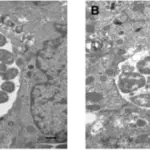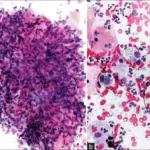Haemophilus ducreyi is the gram-negative, facultative anaerobic bacterium that causes chancroid.
What is the Pathology of Haemophilus Ducreyi?
The pathology of haemophilus ducreyi is:
-Etiology: The cause of haemophilus ducreyi is bacteria.
-Genes involved: lspA1, lspA2 and tadA.
-Pathogenesis: The sequence of events that lead to haemophilus ducreyi are: the pathogen penetrates the skin through breaks in the mucosal barriers and microabrasions on the skin. It produces a cytocidal distending toxin which causes cell cycle arrest and apoptosis/necrosis of human cells and contributes to the aggravation of ulcers.
-Morphology: The morphology associated with haemophilus ducreyi shows gram-negative coccobacilli, non spore-forming, 1.5 µm long and 0.5 µm wide.
-Histology: The histology associated with haemophilus ducreyi shows zonation phenomenon at the ulcer base.
How does Haemophilus Ducreyi Present?
Patients with haemophilus ducreyi typically are all genders at the age range of 21-30 years old. The symptoms, features, and clinical findings associated with haemophilus ducreyi include: pain and bleeding of the sore, dysuria, urethritis, abnormal vaginal discharge.
How is Haemophilus Ducreyi Diagnosed?
Haemophilus ducreyi is diagnosed by PCR, and swab test.
How is Haemophilus Ducreyi Treated?
Haemophilus ducreyi is treated by antibiotics azithromycin, ciprofloxacin, and ceftriaxone.
What is the Prognosis of Haemophilus Ducreyi?
The prognosis of haemophilus ducreyi is good.



